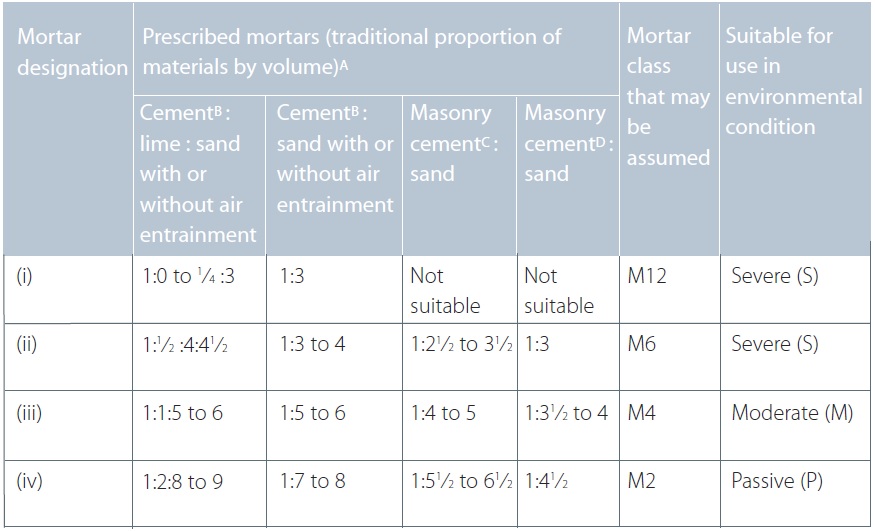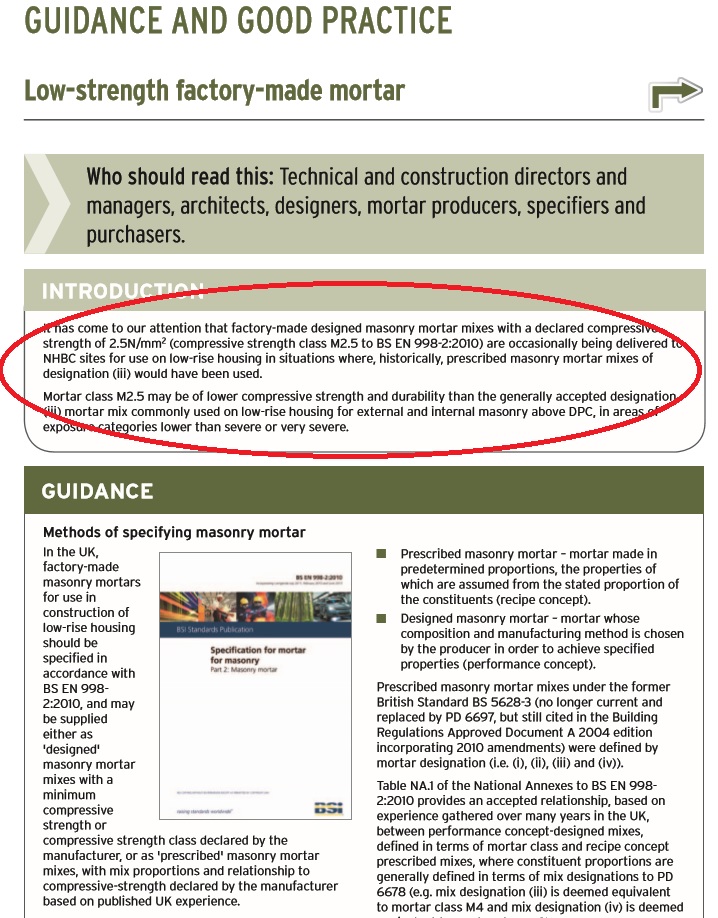Persimmon Homes has published its “wide-ranging independent review” that began back in April and apparently took over eight months to discover a “lack of a group build policy increases the risk of defects in its houses.” Who knew?
This is the basket case, housebuilding pantomime villain; Persimmon Homes with “no agreed procedures to supervise or inspect its employees or sub-contractors’ work and that staff were only given limited training.“
The independent review report was carried out by QC Stephanie Barwise who begins with a legal a disclaimer of liability – “Findings made on an information only and non-reliance basis – no liability or duty is accepted” and recommends that Persimmon Homes “should take sufficient time to formulate and embed a ‘Persimmon Way’ of building”. In the meantime its shares plunged 7.32% on the week. You can read their “Difficult truths” here
So over 8 months since Persimmon realised they have a quality issue that needs addressing, how long will it be before the board take action, start sacking indifferent staff and turn this house building hulk around? If they didn’t know before, or chose to ignore (year after year) what their own customers had been saying, they certainly know now, what is wrong and what needs to be done. But I believe there will be no discernible improvement in either quality or service in the next 12 months because any permanent change of corporate culture could take as long as 20 years and only then, if there is a will and there is a way.
The damning review conclusions:
“Persimmon has traditionally been more a land assembler and house-seller rather than a housebuilder”
“Persimmon Homes has relied on third party warranty providers for inspection of the key build stages. It is unrealistic to regard the warranty providers as being able to inspect all work stages or even all properties; they do not.”
“Persimmon’s pledge that it inspects the work at all stages of the build process is not currently met.”
“A push for sales masked severe problems in build quality and a lax corporate culture which allowed those problems to continue.”
“Persimmon has a nationwide problem of missing and/or incorrectly installed cavity barriers in its timber frame properties, first discovered in October 2018.”
“Pre-completion procedure may have contributed to a culture of non-observance of certain stages in the process, or a mere box ticking exercise, stemming from a belief that any single stage is not important, as another check or inspection will follow later.”
HBF Star Rating “does not accurately reflect build quality”
“The post-completion procedure is focussed on the obtaining of stars via the HBF Survey results from the answer to a single question, “Would you recommend the builder to a friend”, asked eight weeks after legal completion. The Home Builders Federation (HBF) star rating is a measure of quality as perceived by the customer shortly after completion, rather than a measure of the TRUE QUALITY and safety of the build.”
“Therefore, if Persimmon Homes does want to be, and be known as, a builder of quality homes, its aspirations cannot be realised simply by achieving a four or five star HBF rating”
 Not exactly how the HBF spin it in their survey reports each year. But now we have an independent report that categorically states that the HBF 8-week survey results and star rating “does not accurately reflect build quality” and is therefore, quite frankly, pointless and meaningless.
Not exactly how the HBF spin it in their survey reports each year. But now we have an independent report that categorically states that the HBF 8-week survey results and star rating “does not accurately reflect build quality” and is therefore, quite frankly, pointless and meaningless.
“we consider that the HBF Recommendation Score is not necessarily the most appropriate measure, since it does not accurately reflect build quality, albeit it is an indicator of customer service”
But that hasn’t stopped the HBF spinning the survey responses as evidence of “improving quality” especially as the survey sole purpose is to “provide data to rebut negativity.”
“The review clearly shows that the surest route to improved customer satisfaction is through the delivery of consistent build quality and service”
Not £250 John Lewis vouchers in return for a “Yes” to Q1 in the HBF 8-week survey?
In response to the independent review report findings The HBF claim:
“The star rating system is an accepted barometer of how homebuilding companies are performing and has led to a step change in how the industry provides customer service. It is not intended to be a technical check on the house, there are a range of other checks carried out on a new-build home, by the builder and external bodies, to ensure the home is built to the requisite building standards.”
Build stage inspections
Persimmon Homes independent review report states:
“In late October 2019 Persimmon set up a working group with a view to determining inter alia the work stages to be inspected. At the time of drafting this Report, we understand that this process is ongoing and that Persimmon has not yet identified the stages it intends to inspect, nor the manner in which it intends to perform those inspections.”
You really do have to wonder why, giving this damning indictment of a lack of understanding of the basic housebuilding process, “not yet identified the stages to inspect” by presumably board directors, this report was ever made public!
Missing Cavity Fire Barriers
“The problem Persimmon has encountered with missing/improperly fitted cavity barriers is a systemic nationwide problem, which is a manifestation of poor culture coupled with the lack of a Group build process”
Half a job? Persimmon Homes independent review report states:
“inspections to date have been limited to the eaves, and have not checked for cavity barriers which should be present around doors and windows/in party walls. It recently came to light during this Review that on one site, Persimmon operatives and/or subcontractors retained by Persimmon to remedy any issues with cavity barriers had, on two separate visits to one property, claimed that all missing cavity barriers had been retro-fitted when in fact they had not been.”
So a defect, with potentially fatal consequences, on a national scale is found to be not properly rectified even at a second or third attempt!
“We also recommend that Persimmon Homes carries out spot checks on the site where it was twice incorrectly asserted by different Persimmon operatives and/or subcontractors that the cavity barriers had been retro-fitted”, and indeed more generally”
“It is also a clear demonstration of the disconnect between the award of stars via HBF Survey and true (as opposed to perceived) build quality, since one of Persimmon’s 5 star businesses has the highest incidence of missing or incorrectly installed cavity barriers.”
For all that is in Persimmon’s Independent Review, the fact remains that a fish rots from the head and if left long enough everyone notices the smell! The first thing Persimmon need to do is actually recognise they WANT to change.
The Persimmon independent review report shows “a push for sales masked severe problems in build quality and a lax corporate culture which allowed those problems to continue.” With many unhappy homeowners seeing Persimmon as “crooks, cowboys and con-artists,”
Executive pay and bonuses
 The review reports states “The amounts in question were widely perceived as excessive.” Disgraced ex CEO, Jeff Fairburn who received a record £75million bonus windfall, has thus far, according to The Daily Mail, kept his miserly mitts firmly clamped on his ill-gotten bonus millions. This despite having previously pledged in February 2018 to donate a “substantial proportion” to charity via a private charitable trust following public outrage at his then £130million bonus windfall, yet has failed to do so. This was the man who has presided in a decline in the number of NHBC awards for quality won by Persimmon’s 380 site managers, from 21 in 2012 to just two in 2018. Update: In January 2020, it was revealed that Fairburn (53) has resurfaced and bought his way into Berkeley Deveer, a small regional Yorkshire housebuilder having been appointed chief executive after buying a 50% stake in the business.
The review reports states “The amounts in question were widely perceived as excessive.” Disgraced ex CEO, Jeff Fairburn who received a record £75million bonus windfall, has thus far, according to The Daily Mail, kept his miserly mitts firmly clamped on his ill-gotten bonus millions. This despite having previously pledged in February 2018 to donate a “substantial proportion” to charity via a private charitable trust following public outrage at his then £130million bonus windfall, yet has failed to do so. This was the man who has presided in a decline in the number of NHBC awards for quality won by Persimmon’s 380 site managers, from 21 in 2012 to just two in 2018. Update: In January 2020, it was revealed that Fairburn (53) has resurfaced and bought his way into Berkeley Deveer, a small regional Yorkshire housebuilder having been appointed chief executive after buying a 50% stake in the business.
We should also not forget that current CEO David Jenkinson received £45.5million under the Persimmon long term incentive plan (LTIP)
“The test of our progress is not whether we add more to the abundance of those who have much; it is whether we provide enough for those that have too little.” …Franklin D Roosevelt
But when will Persimmon Homes learn?
You couldn’t make it up, just as the review report is published, Persimmon is in the press again having built a brand new 110-home estate precariously close to a collapsing riverbank on the site of an old colliery! It is as if stupidity is being regarded as a virtue!
“Our houses are set back from the bank and are in no danger of moving or being damaged. We have no concerns about our nearest property and no remedial work is required.” So says Persimmon spokesperson but is it reassuring?
It has to be said though, just how many other plc housebuilders would wish the UK new home buying public to know the ‘warts and all’ truth? Have Persimmon been foolish? Will this be its “Ratner” moment?
If Persimmon is genuine in its regret and remorse, it should be paying out thousands to compensate their buyers for their sub-standard, defective, poor quality new homes and giving all those that bought leasehold houses their freehold, as they have undertaken to do on a Cardiff development, without any sneaky management charges, known as “Fleecehold.”
A Ministry of Housing spokesperson told Housing Today that in future, house builders which did not meet the required standards of safety and quality might not be given access to Help to Buy cash. If ever there was an indication of the FAILURE of this government, MHCLG and its Minister Robert Jenrick, to tackle shoddy, defective and dangerous new homes this is it! “In future” “Might not” – why not start right now with Persimmon Homes and withdraw their access to Help to Buy?
Persimmon Homes new chairman Roger Devlin said:
“This review – and the seriousness that we attach to its detailed findings – is an important moment for Persimmon as we continue to build a different business with an increased focus on our customers and wider stakeholders – becoming a business that prioritises purpose as well as profit.”
The detail is in the Devlin! But only time will tell if he is sincere. Reading this snapshot of the company’s tarnished history, I believe it is beyond redemption. It should be noted that Persimmon Homes also have history for making similar noises on improving quality and service. In their Annual Report for 2015 published on 22 February 2016, CEO Jeff Fairburn stated:
“The Group’s priority is to serve our customers well by providing good quality new homes and great service. All of our team are [sic] responsible for delivering high levels of customer satisfaction….Our sales teams across the business are trained to provide excellent levels of service to our customers.”
“During 2015 we invested substantial resources in new customer focused initiatives to improve our customers’ buying experience and our NHBC/HBF 3 star rating. We have introduced dedicated customer liaison managers on our larger sites, improved communication processes with our customers, introduced new processes to strengthen our build programmes and provided additional resources in our customer care teams. These initiatives are showing some early signs of improvement in our customer satisfaction ratings and we will continue to pursue this agenda to secure further progress this year.”
Twelve months later in the Annual Report 2016, the company again promised to improve:
“During 2016 we have continued to invest additional resources in new customer focused initiatives to improve our customers’ buying experience and our NHBC/HBF 3 star rating. This is yielding further improvement in performance with the majority of the Group’s operating businesses showing progress. Prior to customers moving into their new home we have improved our communication processes with them to provide greater understanding of the progress we are making in constructing their new home. We have strengthened our build management processes to facilitate delivery to expected timeframes. Additional support is being provided through reinvigorated processes to demonstrate the features of the new home to customers, assistance with identifying any small remaining issues on moving in day and providing improved systems and processes for our customer care teams to support the prompt rectification of any outstanding matters. Customer care performance is reflected in relevant employees’ remuneration to support a closer alignment to the Group’s objectives. Whilst these initiatives are delivering tangible improvements in our customer satisfaction ratings we remain determined to deliver further advancement this year.”
Regardless of whether Persimmon actually do really intend to change and do what they say they will this time; the government should take note of this report and instigate a wider investigation, in the form of a public inquiry of the housebuilding industry and ignore attempts at positive spin from the HBF. It is clear Persimmon have failed all ends up, but I am in no doubt it is not unique. If, as seems likely, the government is intent on continuing with taxpayer subsidies to plc housebuilders via Help to Buy or any replacement, it must make these conditional on ongoing, independently validated and monitored build quality.










































